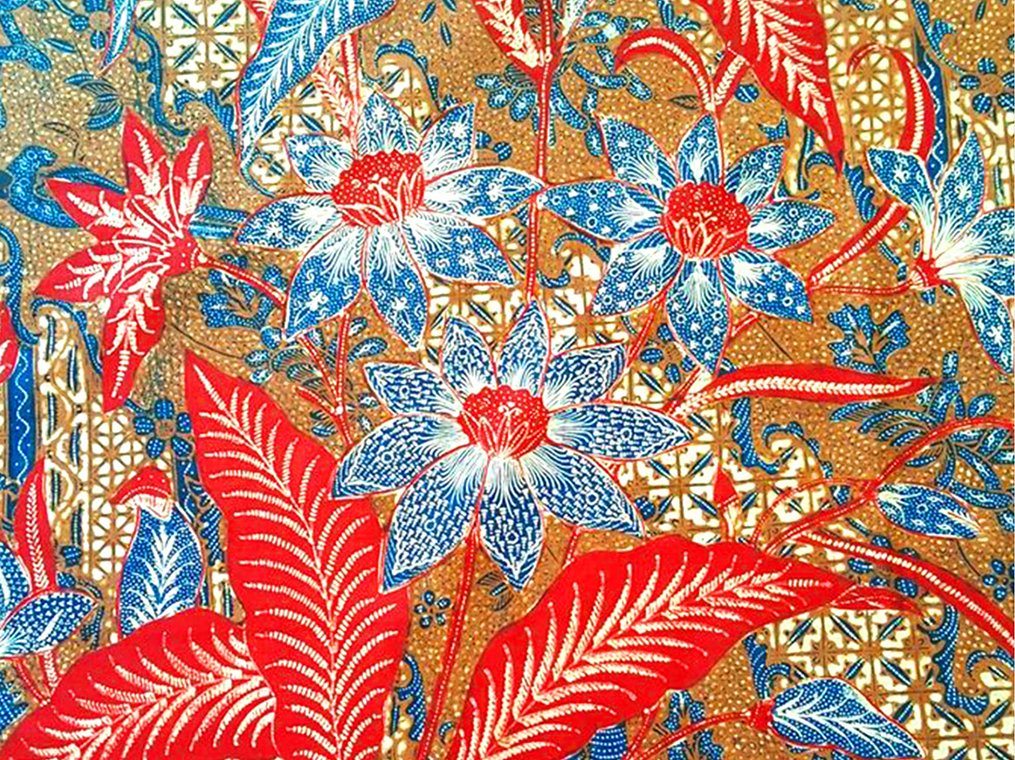Peranakan-influenced batik also referred to as Batik Pesisir was only developed along the coastal areas. Pesisir means coast. Each batik is an invaluable piece of art and historical recording. For generations early Chinese settlers have lived in coastal cities like Cirebon, Semarang, Pekalongan and Lasem.
Many renowned Batik artists such as Oei Khing Liem, Oey Soen King, and Liem Boen Gan came from these coastal cities. Oey Soe Tjoen’s Batik pieces are known internationally and fetch a very high price. Till today, a few of these Batik houses are still in operation but they are getting more scarce.

CHARACTERISTICS OF BATIK PESISIR
Bright Colors
This style of batik is known for its vibrant and bold color choices. Coastal elements like the sun-kissed sea and cool blue sky may inspire the color palette.
Nature-Inspired Motifs
Designs frequently feature motifs inspired by nature, such as waves, fish, shells, and floral patterns. These motifs are reflective of the beautiful coastal surroundings.
Cultural Significance
The motifs and patterns in Batik Pesisir may also carry cultural or symbolic meanings, reflecting the cultural fusion of coastal Indonesia, China, and the Netherlands.
BATIK PESISIR STYLES

Batik Tiga Negeri
Batik Tiga Negeri or Batik of The Three Countries uses 3 main colors: red, indigo blue, and soga brown. Red is a symbol of happiness in Chinese traditions and is often used in weddings. Blue came from the Dutch, influenced by Europeans. Soga brown, the color of a natural brown dye, is synonymous with Javanese culture. Javanese is the largest ethnic group in Indonesia.

Batik Buketan
Buketan, originating from the Dutch term for bouquets, is a key motif in Dutch Batik. Indo-European women pioneered this style in the late 19th century, drawing inspiration from the European pastime of plant collecting. Peranakan communities adopted the Buketan motif, showcasing a cultural blend of local and foreign influences.

Batik Pagi Sore
Batik Pagi Sore refers to batik with two kinds of motifs on one sheet. The term Pagi translates to day: indicating the lighter-colored section, while Sore means evening: signifying the darker-colored section. This allows individuals to wear one motif in the morning and switch to a different one in the evening.
Historically, batik Pagi Sore is thought to have its roots in Pekalongan during the 1930s, gaining popularity during the Japanese occupation from 1942 to 1945. The constraints of this challenging era sparked innovative creations. Until today, it remains one of the most popular Peranakan batik styles.






